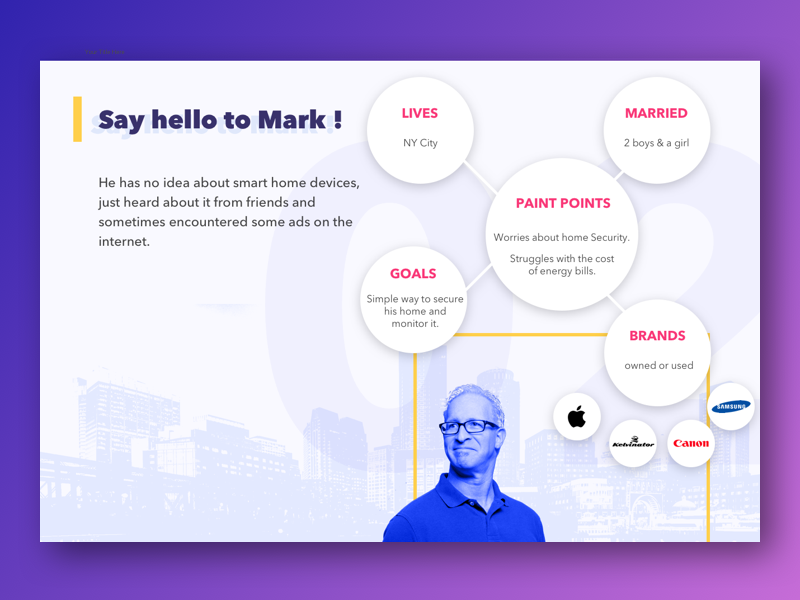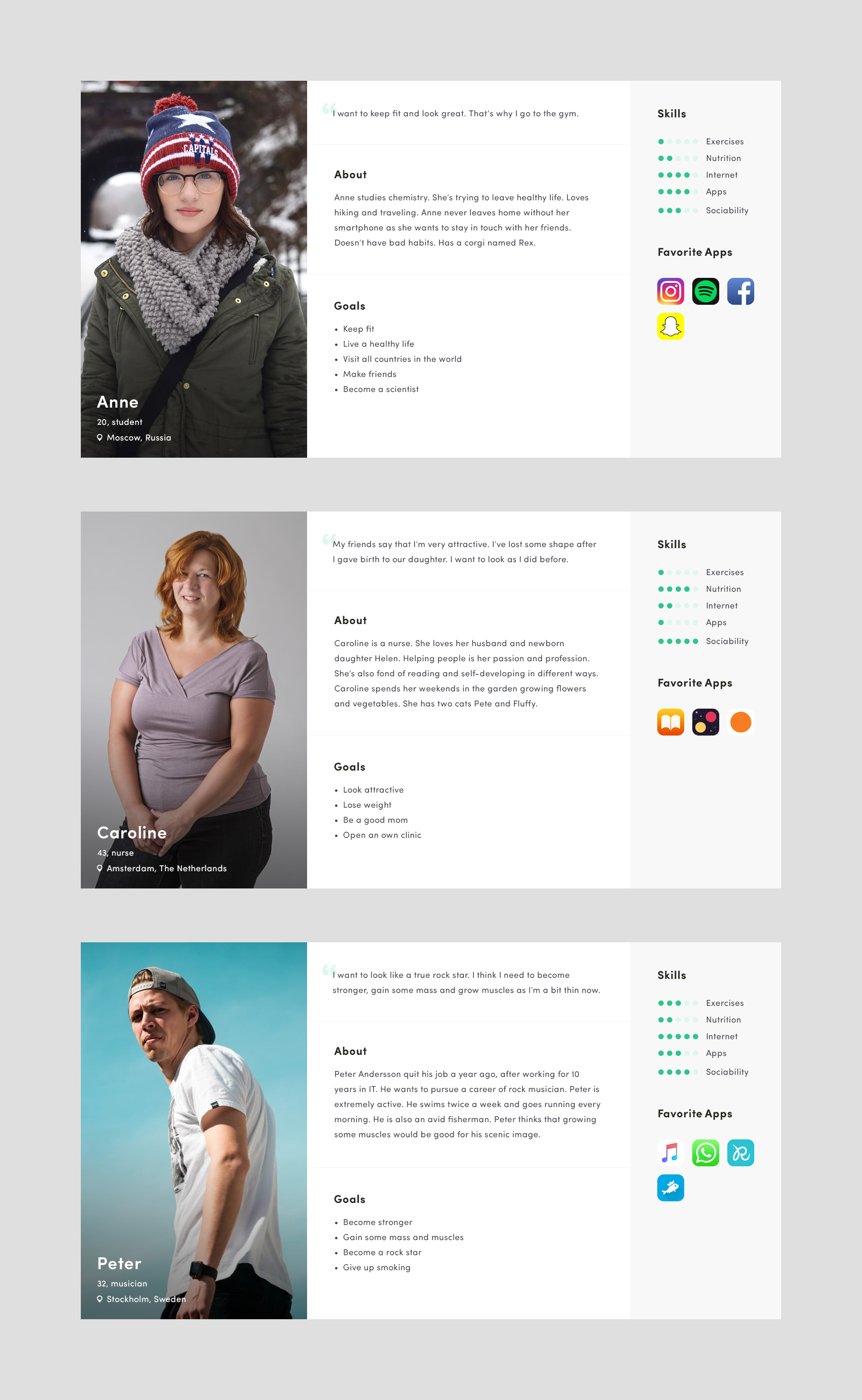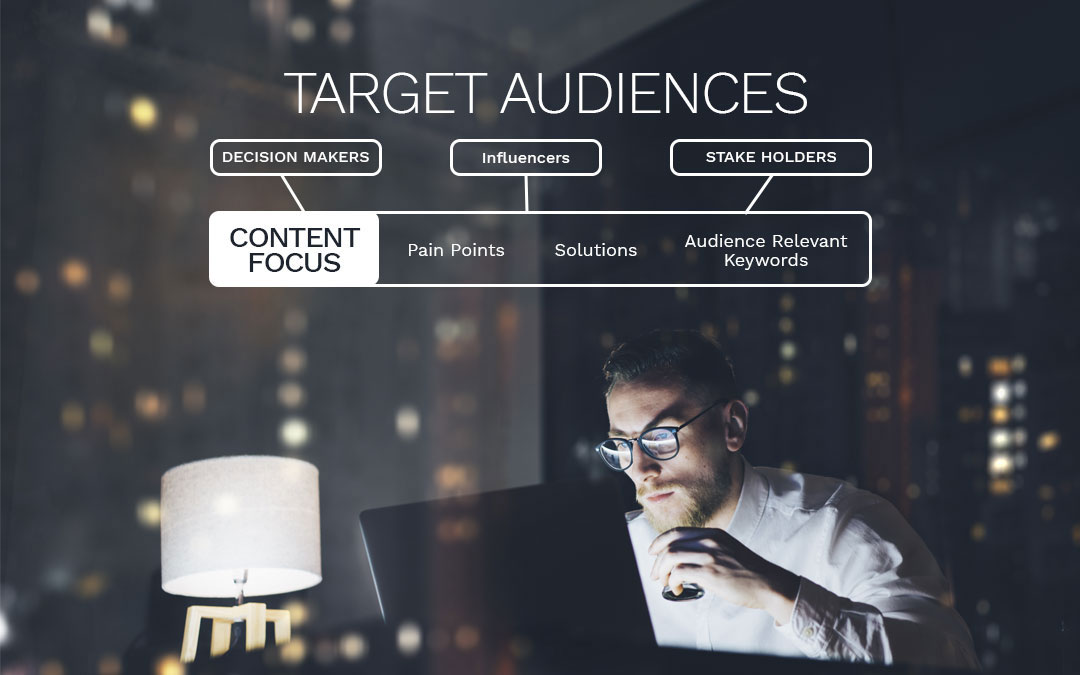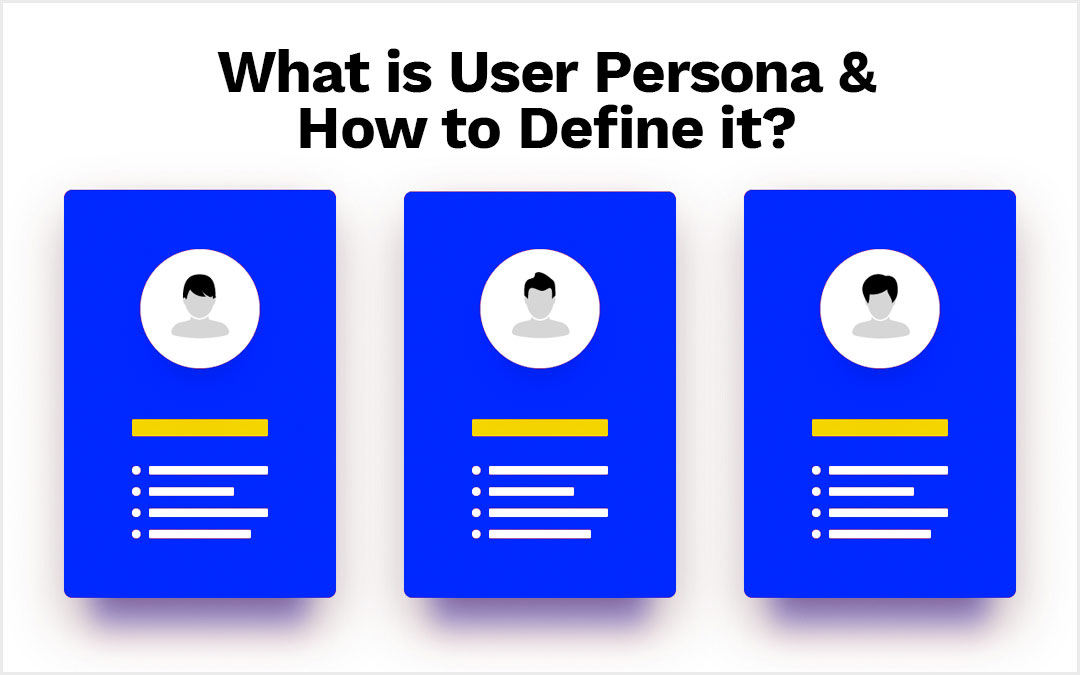User Personas – An Introduction
What Is Persona Research?
It is wonderful to have users, not just because you are serving a need, but because you are doing something right. Needless to say, thus, it is important to identify your real users. To draw the curtain, comes a design tool, namely user persona that creates a fictional representation of your ideal customer. A persona is framed out of user research and includes the needs, goals and observed behavior patterns of the target audience.
The motive is to bring all the design stakeholders on the same page with the users. In fact, if you want a great user experience, you must have a great user persona. Want to have a common understanding of the final user? Personas are what you need for a user-centered design.
User Persona NEED Card

Image Source - Dribble.com
Be it a smartphone app or a mobile-responsive website, one thing needs to be clear, i.e., who will be the end user of the product. If you are fully familiar with your audience, you can mold your choice in features and design elements to suit their preferences and thereby, make the product of ultimate use. A persona dictates who is your set target audience by unveiling who is your ideal customer, what are the present behavioral flows and what are the requirements and expectations of the users. Grasping the needs of your users is important to build a groundbreaking product. Clear and crisp personas will help you in quickly recognizing and fulfilling the user needs. Personas will also state the type of individuals who are inclined towards your product, which is pivotal to measure the overall value proposition.
User Persona TYPES
Marketing Personas
This type covers demographic data, buyer expectations and concerns, special preferences, marketing message and media plans. Such Personas bring in notice the customer behavior but do not explore deeper into the reasons for such conduct. Marketing personas are beneficial to study what type of people will be influenced by typical products or messages or even for that matter determining the ROI of a product. What it fails at is explaining the complexity of a product or service like what is a product about, how does it function or what features stand out in a product or service.
Proto-Personas
Proto personas suffice when there is the lack of time or money to make accurate research-based personas. They work on secondary research and the team’s intelligent guesses passed as per the designer on the task. Talking of user-centric approach, having a proto-persona to give out design decisions is still reasonable than not keeping a persona at all; that said, research should validate the outcome derived.
Design Personas
This category gives stress on user goals, behavioral patterns and pain points, goals as against the buyer or media habits. The focus is on field research and real people. They narrate a story and explain the reason behind the current behavior of the user to help everyone involved in designing understand the purpose and even so that they consider the end user throughout the development process. Design personas are helpful in conveying the research information and user goals, knowing and communicating with particular types of users, explaining the reach of a product or service and keeping elastic user and self-referential design at bay.
How To Create Persona?
The Main Elements
A lucid user persona consists of four main components-
- Header
- Demographic Profile
- Personal Information
- End Goal(s)
- Scenario
Prior to building a persona, undergo research so as to be accurate in your representation of the users. When you are done with collecting sufficient amount of data, categorize the information into persona groups that project your ideal customers. Don’t forget to focus on the primary needs of the most important user groups; you can’t account for everything and thus, shouldn’t don’t get into the trap of perfection.
1. Lead With Header
The header consists of a fictional name, image, and quote that display the most significant points of the persona relevant to your product. Quotes simulate a persona comment and reflect behavior and attitude as the user. These attributes help in enhancing memorability, maintaining the focus of your design team on the end users throughout the process.
2. Broad Demographic Profile
Even though the mentioned name and image can be fictional, still the demographic details will always be factual and governed on user research. The demographic profile shows four main parts- personal background, professional background, user environment and psychographics.
3. Personal Information
The personal details include age, ethnicity, gender, education, persona group like working mothers and family status like single, married or widowed etc. Information on residence and social class are also present.
Professional Data - The professional information consists of records such as job occupation, work experience, and income level.
User Expertise - It talks about user environment in terms of the physical, social and technological context of the user. It describes character expertise in the domain and even internet proficiency level. The divisions are made as per the access to technological devices, work environment and level of collaboration. The module takes into consideration the devices and platforms with which the personas are familiar. Depending upon the product-focus, different variables are used.
Psychographics - Psychographics covers aspects like behaviors, choices, inspirations and pain points. All in all, the demographic profile gives a tinge of reality to a user persona, enhancing the quality of empathy when looking at user needs and goals. Personality characteristics are used to define a relationship with the product-service.
4. Towards End Goal(s)
The end goal is the moving factor that instigates action and answers the question as to what do users expect from the product or what do they need to attain by using your product. Expectations and priorities of the users at the time of interaction play a great role. End goals are the main motivation for your users and decide what the persona wants or need to accomplish. These pursued goals also help in building a relationship with the brand or the product.
5. Call For Scenario
A scenario can be defined as a day in the life that explains how a person would respond to your product in a particular circumstance to attain his or her end goals. The scenario generally reveals when, where and how the narrative happens. They are usually detailed from the viewpoint of the persona and enumerate user cases that have the possibility in the future.

Image Source - Dribble.com
For Perfect Personas
- Always remember that personas are so-called fictional characters; even then real data and research or focus target help in their creation. In User Centered Design, previous research aid in the formation of the personas, but in Lean UX methods personas can even be created based on assumptions like in proto personas and then checked later on real data.
- The lesser the number of personas, the better is the case as it allows to keep the focus on design and thus, ensure success in future.
- In a crux, personas must cover the answers to the questions, i.e., what are the needs of the users, their wants and limitations.
- Be precise in creating your personas rather than being accurate. This implies that they should be fully contained so that they don’t get lost during the development process. Sufficient precision is what matters the most as it cannot be crushed under the pressures of development.
How To Do Persona Analysis?
The objective of persona analysis is to create hyper-relevant content that deals with the requirements of the people that you want to communicate to. Performing a persona analysis is a scrupulous task. Having said that, still, it’s worth the bet as it lays out a blueprint of your content plan in front of you and thus, enhances the charm of your content. You are never short of content if you have undertaken the procedure of persona analysis.
Discover The Motivations
At an advanced level, a persona analysis recognizes the personas of the people who purchase your products or services. They are categorized in a table format along with the main business issues. These are known as the pain points. Each persona is scrutinized and then the pain points specific to each one of them as against the common case are listed alongside. For instance, two persona categories can be Application Developers and IT Directors. Developers can be further divided into a small company, large company, cloud developers, mobile developers, programming language etc. IT Directors can be bifurcated into a small company, large company, non-profit, industry, defense, government etc. We perform a detailed analysis where we recognize the pain points specific to each persona in particular category and specific to each sub-set.

The Target
Keywords are aligned to each persona so as to chalk out a competent marketing plan. New keywords contextual to a persona’s pain points are quite often added later on. The content and the personas go hand in hand with the stages of the buying cycle to determine the content best applicable for a particular scenario. Development of a persona strategy emboldens the brand to form an efficient content marketing plan that connects with the buyers and addresses their relevant issues. It is seen that the most sought after companies in the market too have multiple buyer personas. It is always good to review and update your persona analysis regularly every year.
For The Design Process
Persona represents the voice of the user. With the help of scenarios, you can understand the context of a persona better and also gauge main user flows. A scenario depicts the story of how the product can be utilized in the future. It is inspired by persona needs and goals rather than by system features and capabilities. A scenario can aid in drawing out the main requirements that must be paid attention. Yes, minimum of two personas can also connect the product to the end-user. Note: always design for the primary and adjust for the secondary. Don’t rely too much on them as they are half of the solution and can’t take you very far by depending upon them wholly solely. The perfect recipe is to combine personas along with scenarios to augment success. Still, don’t forget that personas can go a long way to validate or disprove design decisions, to emphasize feature requests, to ideate and even be major to critiques.
End Note
If you want to rapidly recognize user needs, personas are the perfect go-to method. Archetypical users can be created with the aid of real data, which can boost the teams to design for personas with efficiency and in turn fulfill the expectations of the target audience. In a crux, personas are beneficial during the entire product development cycle, i.e., from selecting the requisite features in a prototype to analyze the end product. If united with other user experiences design methods like usability and task analyses, personas can fire up a useful and usable solution.



